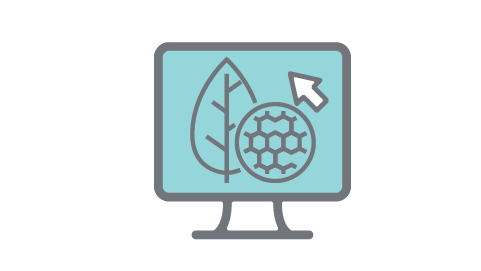Online lab work
Lab courses are one of the more complicated and difficult spaces to recreate or instruct through remote learning. Accept that the experience cannot be fully reproduced. Again, this is something that can be backward-designed. Start with the key learning objectives, and let that drive your decisions. If data analysis and critical thinking are part of your laboratory class outcomes, ensure they are built into the design of your lab course. AND let yourself to be creative and imperfect in design of the class.
For lower level laboratories, are there simple experiments that can be conducted at home? Depending on the number of students, mailed pH strips and household items could be used in a titration. Alternatively, consider finding a virtual simulation from the many collections on the Internet. We all know making solutions and buffers are the bane of biochemistry students - so think about designing learning activities on these subjects.
Deep analysis of the literature is also an excellent way to build laboratory-related skills. Access a Journal of Biological Chemistry article and have the students review the methods sections - they can create presentations on various aspects of the methods of a few key papers and analyze the figures and results sections in a follow-up activity.
Demonstrations are very valid when in a pinch. You could create a video of a technique and annotate the key steps of a western blot, an SDS-PAGE gel, or protein assay, or keep your teaching assistants employed by having them create videos or demonstrations. Include simple quizzes to keep students engaged. Walk students through an enzyme assay (use some of the resource links below if you don’t have your own) and videotape the assay being conducted - perhaps even do this live in a Zoom or WebEx chat or using the meeting features in your LMS. Show the spectrophotometer as absorbance changes to talk about reactants and products. Pause and interact with the students, have them break out into groups (if your LMS allows) and make predictions on the experiment at hand. Then give them data sets to analyze. You might assign different data sets for different student groups, perhaps some that have a “flaw” and a follow-up repeated experiment.
Biomolecular modeling is another interactive option. Using Chimera, PyMOL, Jmol or other visualization programs, you can design experiments where students are asked to model active sites, mutate amino acids, and consider the effects of a proposed mutation. There are RNAseq and protein mass spectroscopy databases that can be mined for hypothesis-driven experiences. Free programs exist to modify a PDB file and predict protein or ligand docking and energy minimization. Ask students to make predictions and conduct a virtual experiment based on a PDB structure. You can take advantage of many online tutorials in this area; there are several linked examples of these in the resource list.
Shared Data Sets. If you can use data sets from your prior labs, your personal research or that of a colleague, you can set up the kinds of virtual labs discussed here. Two specific examples linked below that focus on protein biochemistry are the Malate Dehydrogenase CURE Community and BASIL virtual protein lab groups. Both have plans for running parts of a semester in virtual format using existing shareable data. CourseSource and CURE.net are other possible sources to find labs with data to convert to this format.
You could also consider having students work on a grant proposal as an alternative to wet lab techniques. Students will gain experience in formulating hypotheses, experimental design, and literature analysis. They can learn about techniques and instrumentation that they might not have available to them in the laboratory.
Finally, think of all of the times you’ve taught a laboratory and wished there was more time to have students really think about their results… Why not have them go back and be critical in their analysis? Now you have time to do some very valuable teaching to the students.
Resources
- General considerations
Taken from a thread: three approaches to moving labs to an online format, resources.
Lab videos/Simulations
- LabXchange
Wide collection of labs.
Biotechnology/molecular biology simulators - Merlot
Wide collection of labs, some rated. - Simulated labs by iWorx of animal physiology
Data and results (.zip download) - Interactive biology simulations (i.e. neuron, density)
- Interactive chemistry simulation
- Webmo
Web-based interface to computational chemistry packages. - Chem Collective
Free chemistry lab simulations by topic and type of source. - Chemical reaction simulator and acid base titrations
Free web tool. - Titrations (acid base and redox)
- Pearson LabBench Activities - simple lab demonstractions for introductory biology
- Learn.Genetics - Biochem/mol bio/genetics/neuroscience- virtual experiments with content explained
- Virtual labs - simple demonstrations of bio/mol bio labs
- Bio-Rad Explorer - Instructional videos that demonstrate various lab techniques
- Exploration of an interactive “Virtual and Actual Combined” teaching mode in medical developmental biology
Virtual labs
- Malate Dehydrogenase CUREs
Community example of moving to a virtual lab class. - Biochemistry Authentic Scientific Inquiry Laboratory CUREs
First five modules are computational based and amenable to virtual learning. - Bruker NMR Topspin
Free NMR topspin licensing for academics. - HHMI BioInteractive
Biochemistry/Mol Bio interactive lab simulations. - Interactive ELISA assay

